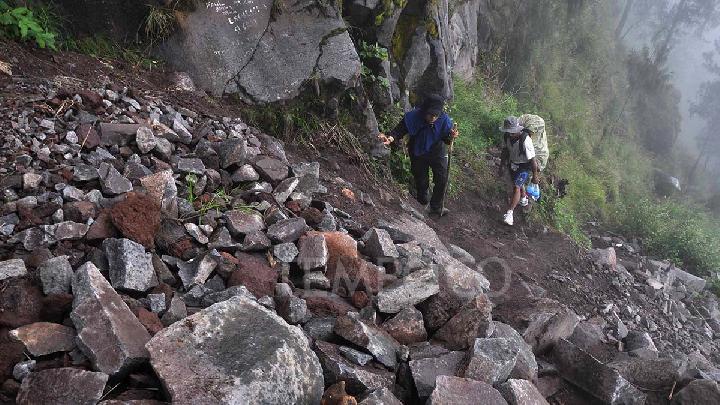Conquer Indonesia's Peaks: Your Ultimate Guide to Mountain Hiking Difficulty Levels ⛰️🇵🇭

Indonesia, a land of breathtaking landscapes and volcanic wonders, is a paradise for mountain hikers. But with so many trails to choose from, knowing which one suits your skill level can be daunting. This comprehensive guide breaks down Indonesia's mountain hiking trails into five distinct difficulty levels, providing you with the essential information you need to plan your adventure safely and enjoyably. Whether you're a seasoned mountaineer or a beginner eager to explore, we've got you covered!
Understanding the Classification System
The classification of Indonesian mountain hiking trails isn't arbitrary. It's carefully developed based on a range of factors, including terrain steepness, altitude, weather conditions, trail length, and the presence of technical climbing sections. The goal is to provide hikers with a realistic assessment of the challenges they’ll face, ensuring a rewarding and safe experience.
Difficulty Levels Explained
Level 1: Easy - Perfect for Beginners (1-3 Hours)
These trails are generally well-maintained, with gentle slopes and shorter distances. They often lead to scenic viewpoints or waterfalls, making them ideal for families and those new to hiking. Expect minimal elevation gain and manageable conditions.
Examples: Bukit Paralayang (Bali), Kawah Putih (West Java - accessible roads)
Level 2: Moderate - A Step Up the Challenge (3-6 Hours)
Moderate trails involve steeper inclines, longer distances, and potentially uneven terrain. Some basic fitness is required, and hikers should be prepared for a more demanding trek. You might encounter some rocky sections or minor obstacles.
Examples: Mount Papandayan (West Java), Mount Bromo (East Java - relatively easy ascent)
Level 3: Challenging - For Experienced Hikers (6-9 Hours)
These trails demand a good level of fitness and hiking experience. Expect significant elevation gain, challenging terrain, and potentially unpredictable weather. Proper gear and navigation skills are essential.
Examples: Mount Gede Pangrango (West Java), Mount Rinjani (Lombok - shorter routes)
Level 4: Difficult - Serious Mountaineering (9-12 Hours)
Difficult trails are reserved for experienced mountaineers with excellent physical condition and technical skills. They often involve steep ascents, exposed ridges, and challenging weather conditions. Proper equipment, including ropes and harnesses, may be necessary.
Examples: Mount Kerinci (Sumatra), Mount Semeru (East Java)
Level 5: Expert - For Elite Climbers Only (12+ Hours)
These are the most challenging mountains in Indonesia, requiring exceptional mountaineering skills, extensive experience, and specialized equipment. Expect extreme weather, technical climbing sections, and potentially dangerous conditions. Permits and guides are often required.
Examples: Carstensz Pyramid (Papua - requires significant expedition planning)
Tips for Choosing the Right Trail
- Assess your fitness level: Be honest about your abilities and choose a trail that matches your current condition.
- Check the weather forecast: Mountain weather can change rapidly.
- Bring appropriate gear: Sturdy hiking boots, layers of clothing, plenty of water, and snacks are essential.
- Inform someone of your plans: Let a friend or family member know where you're going and when you expect to return.
- Consider hiring a local guide: A guide can provide valuable insights, ensure your safety, and enhance your overall experience.
Indonesia's mountains are waiting to be explored! By understanding the difficulty levels and planning accordingly, you can embark on an unforgettable hiking adventure.






